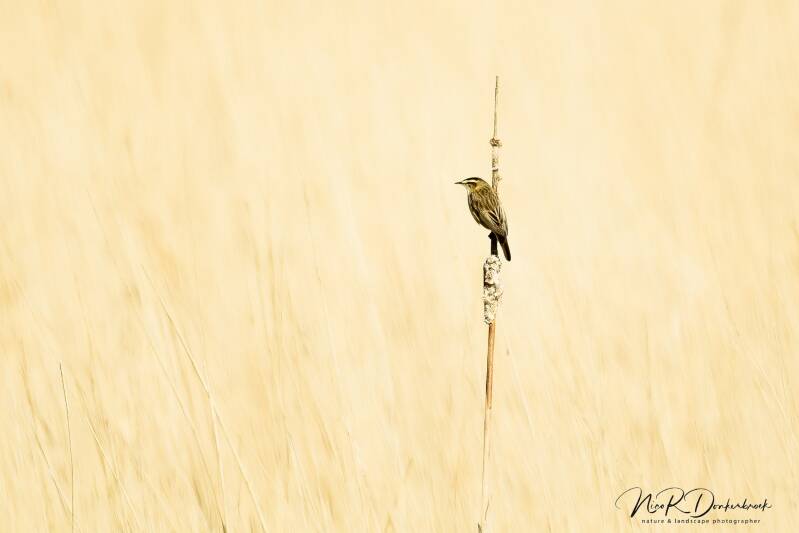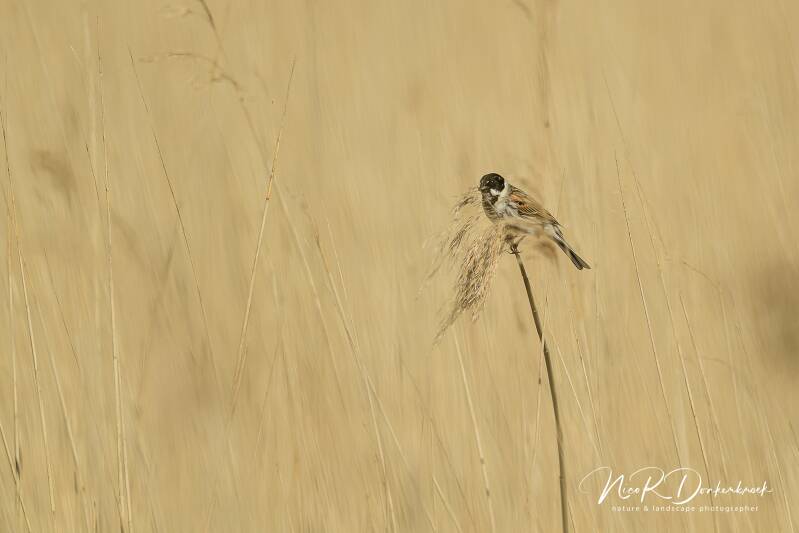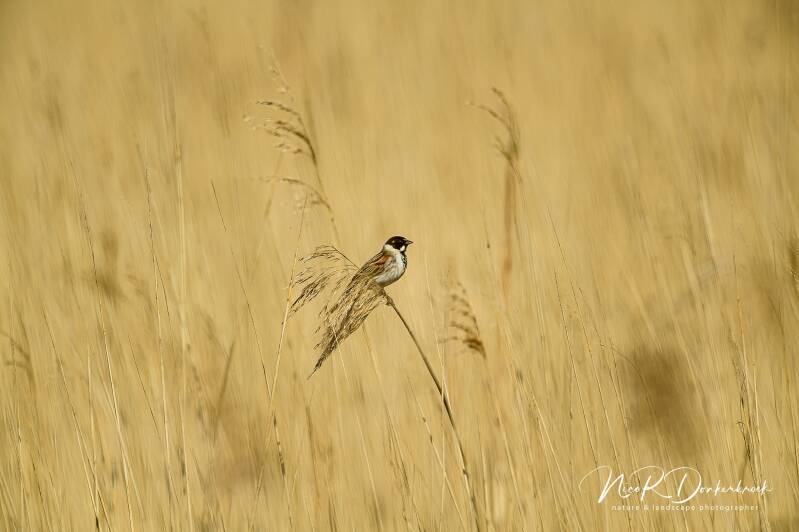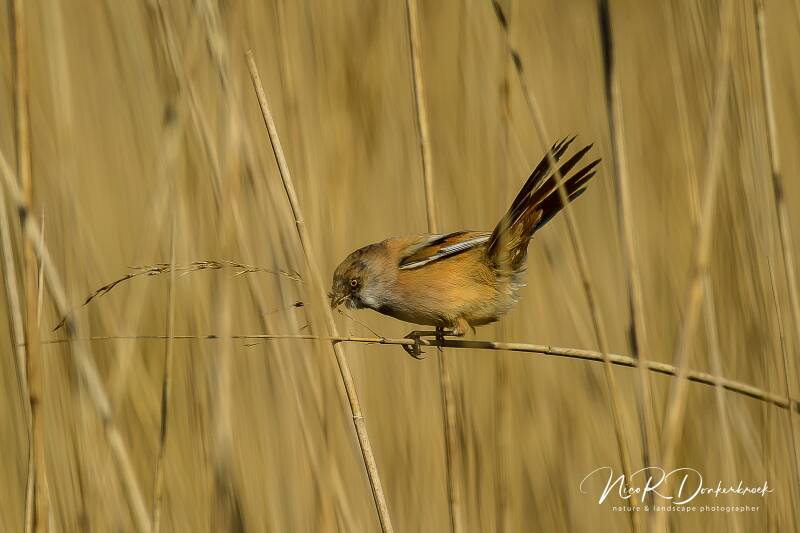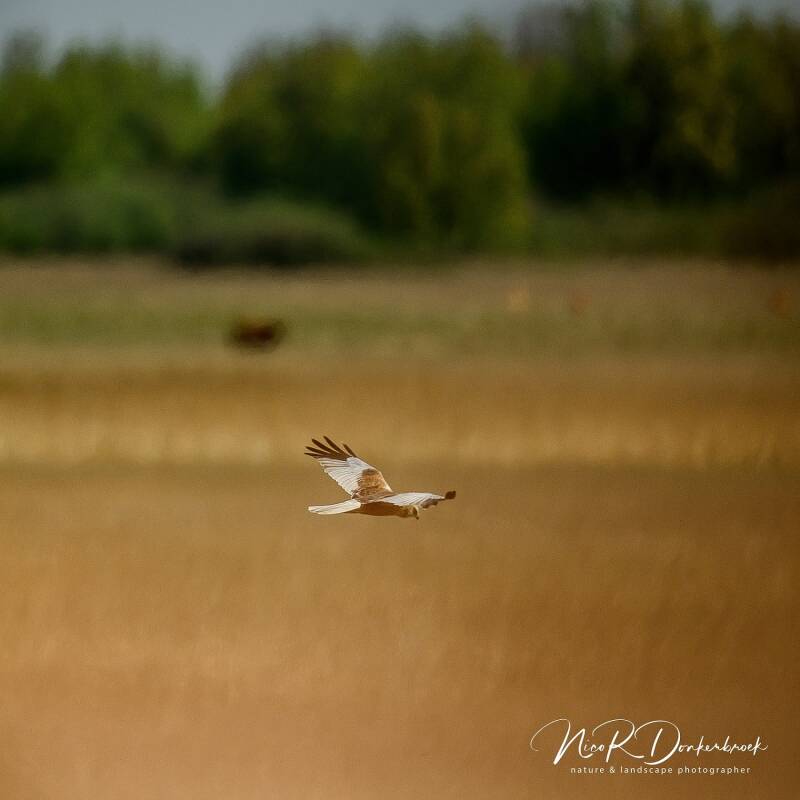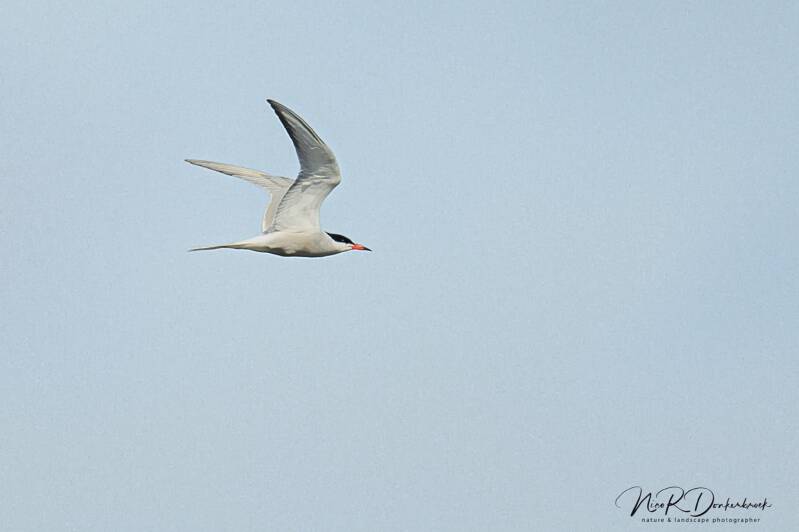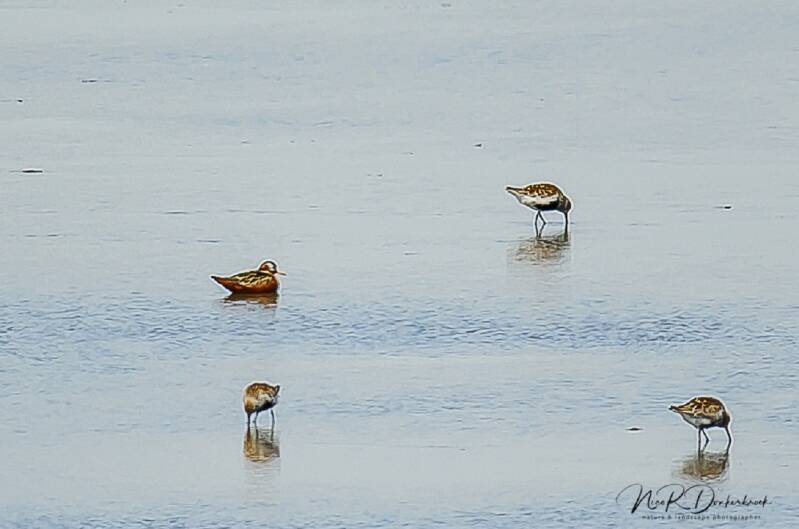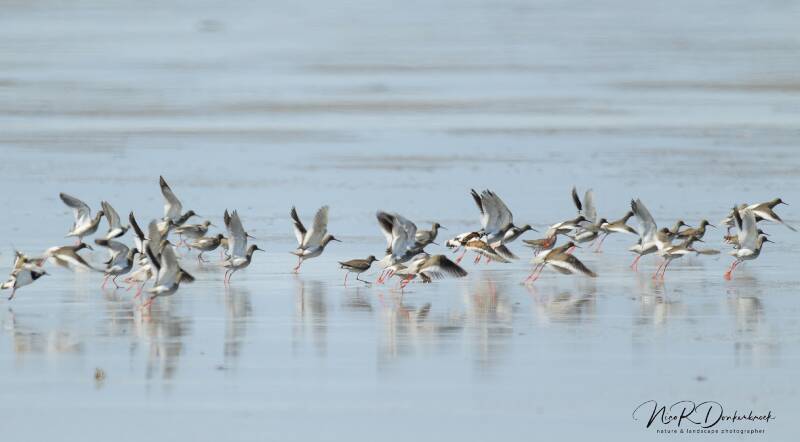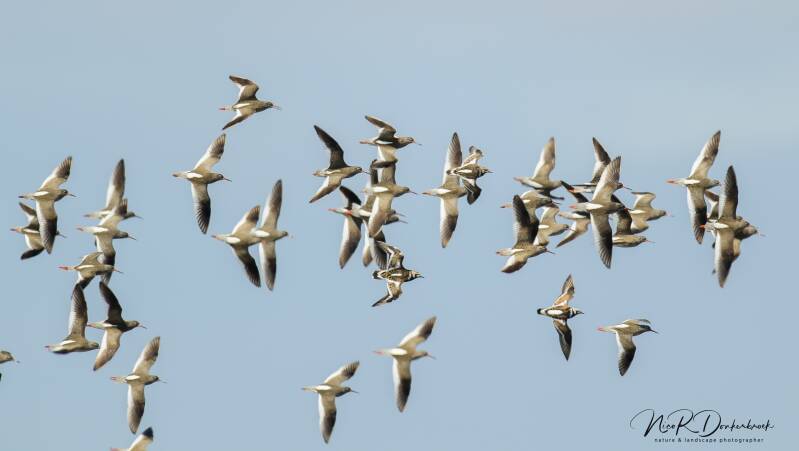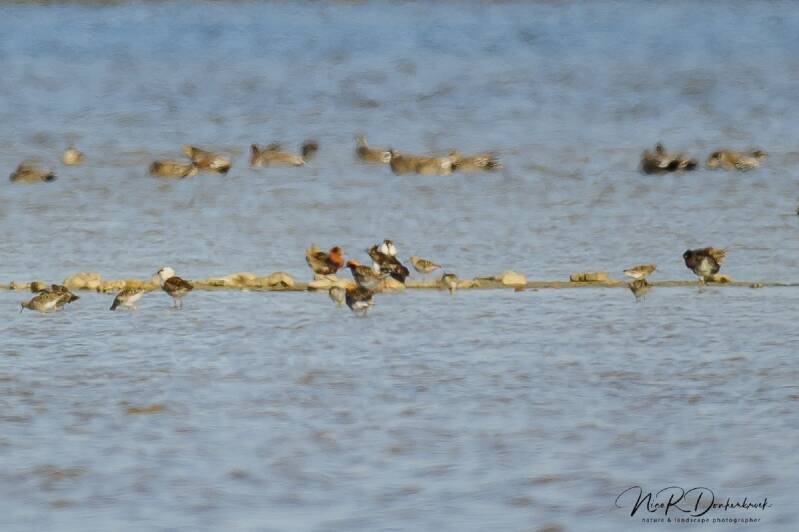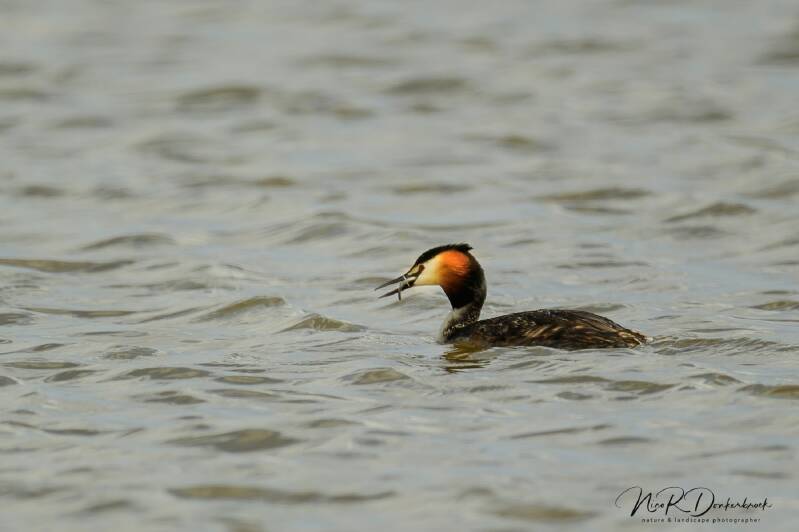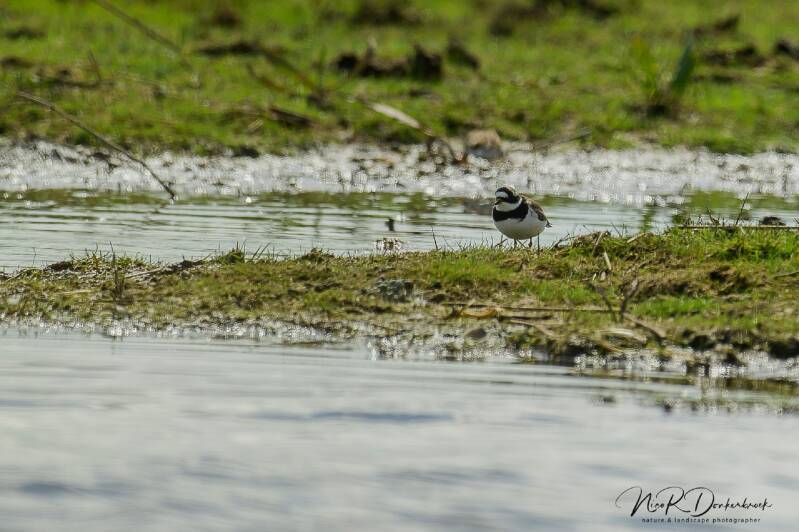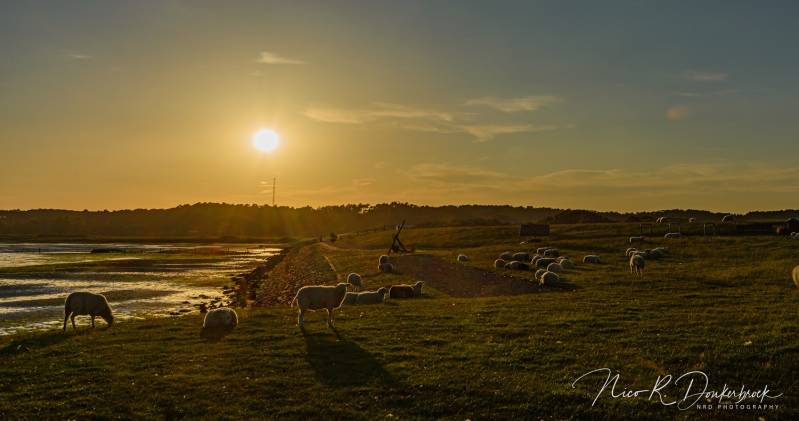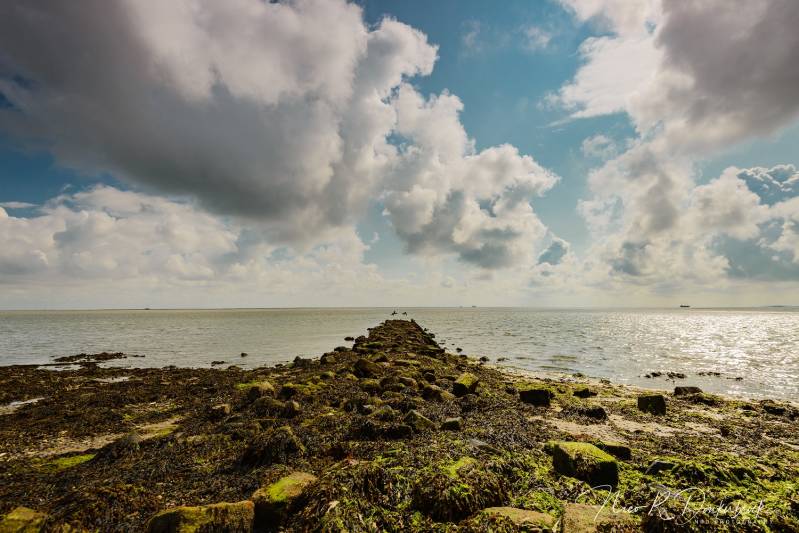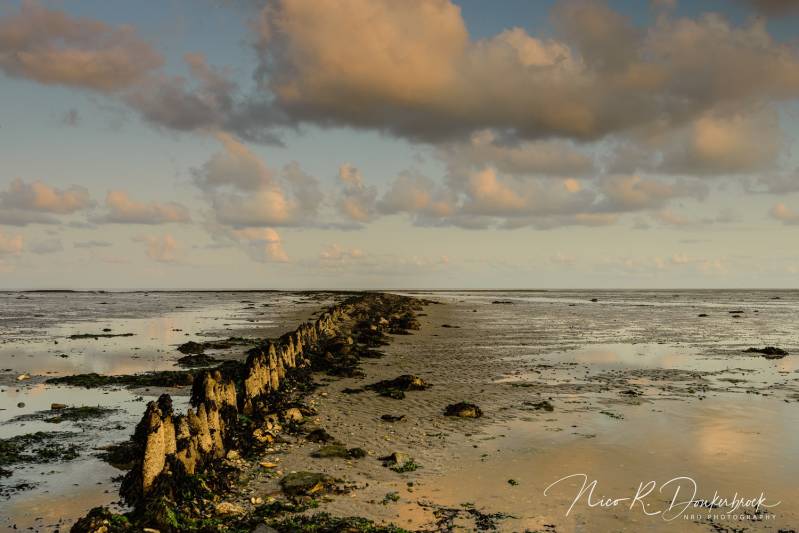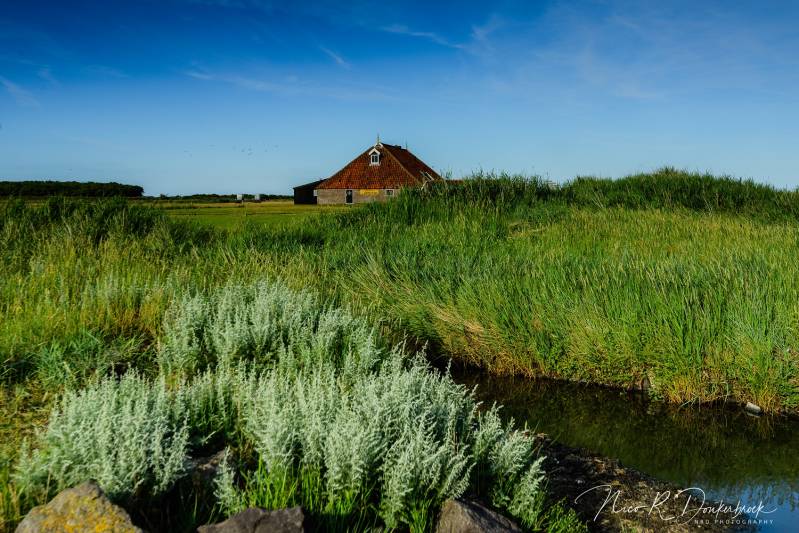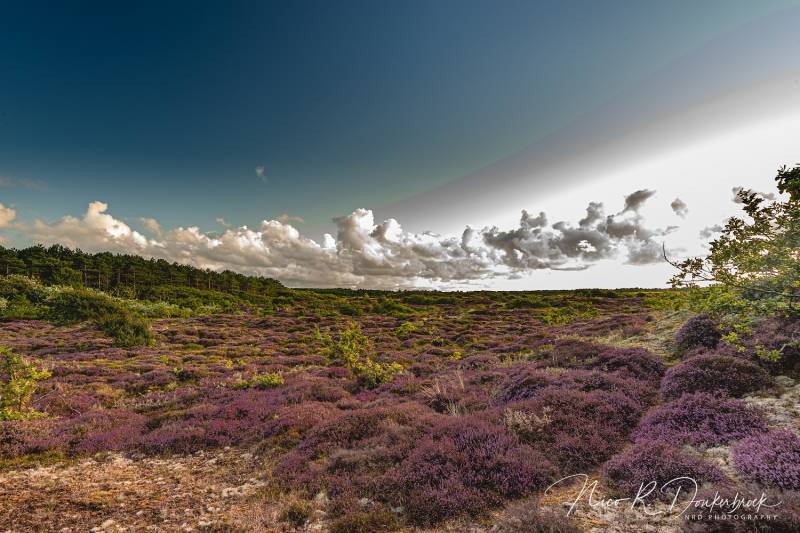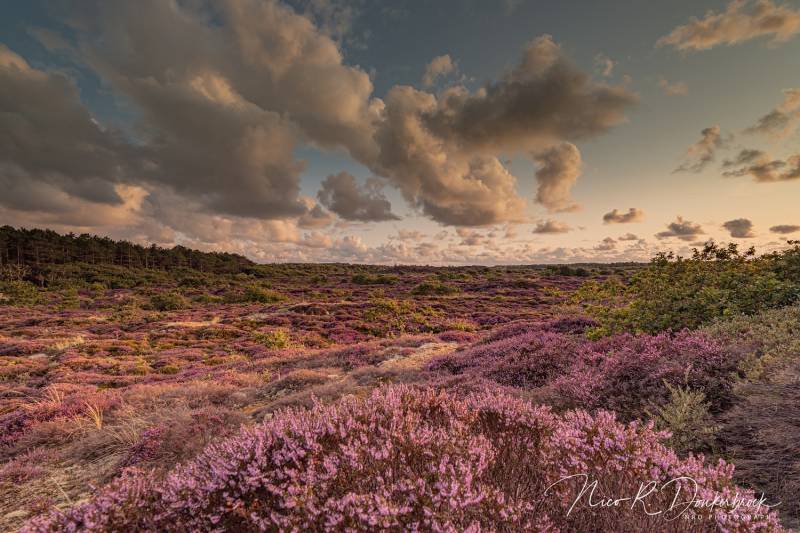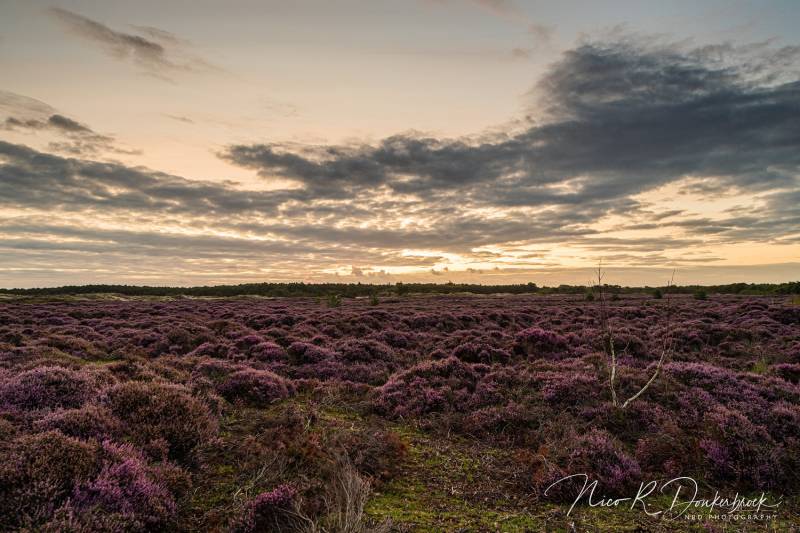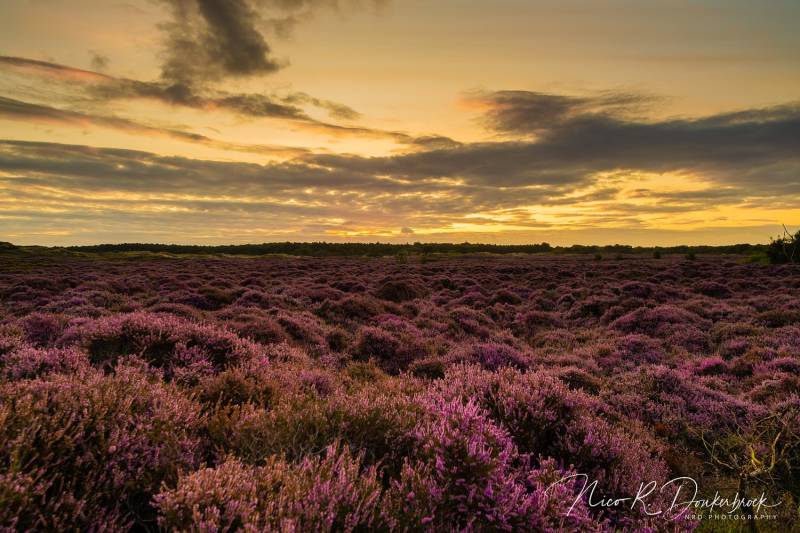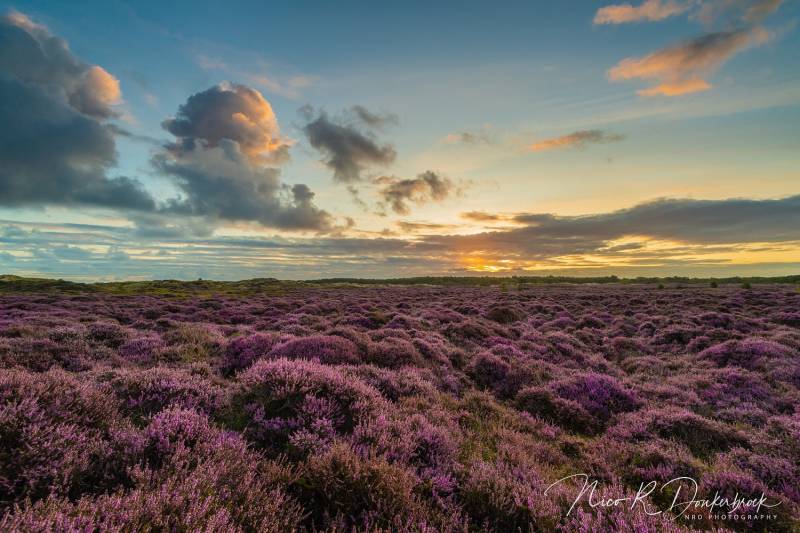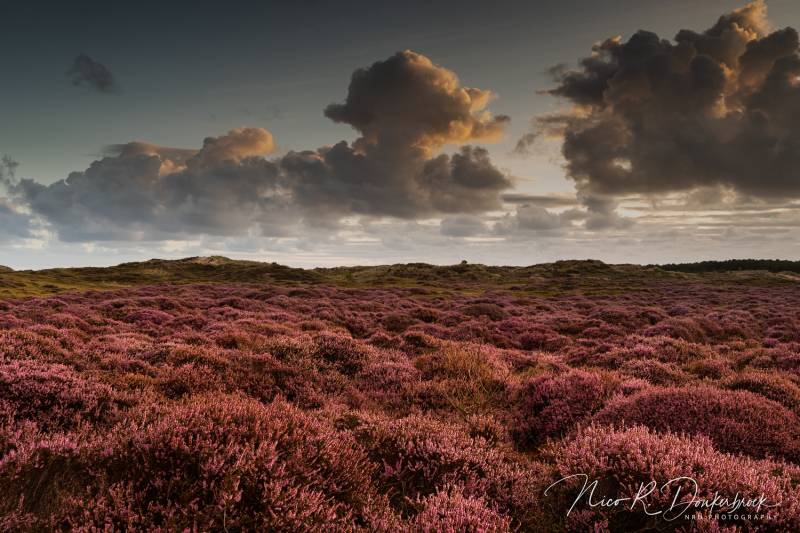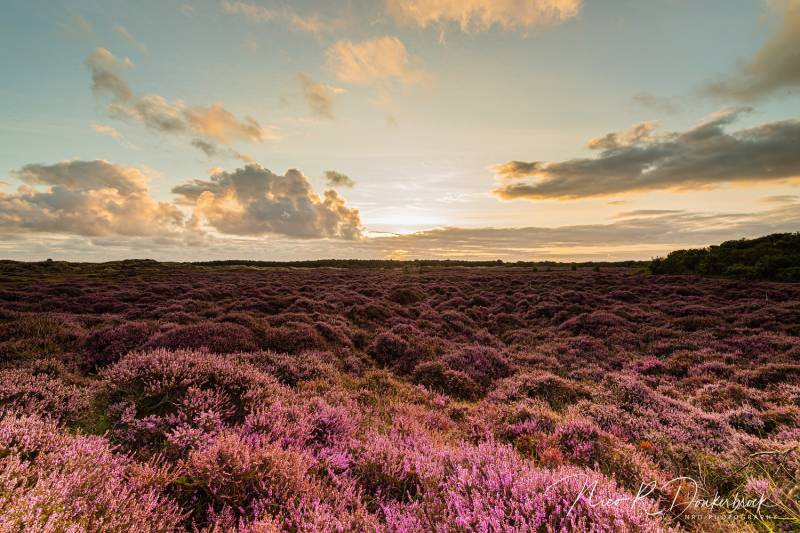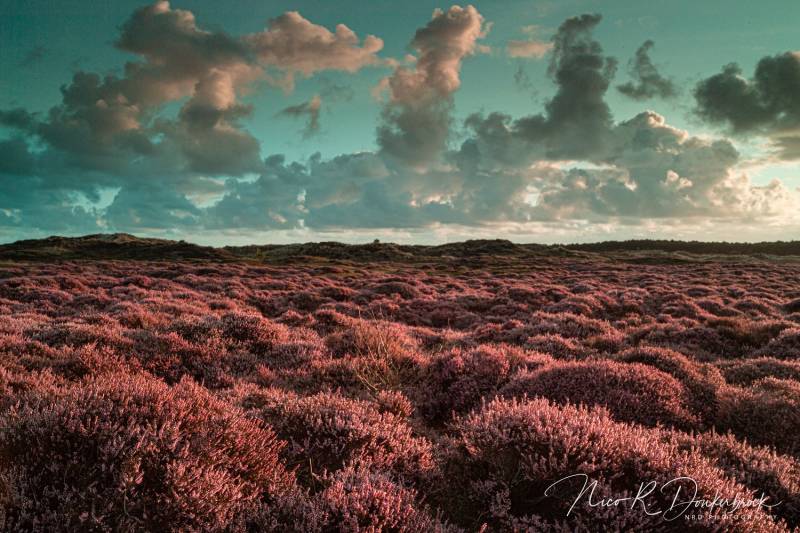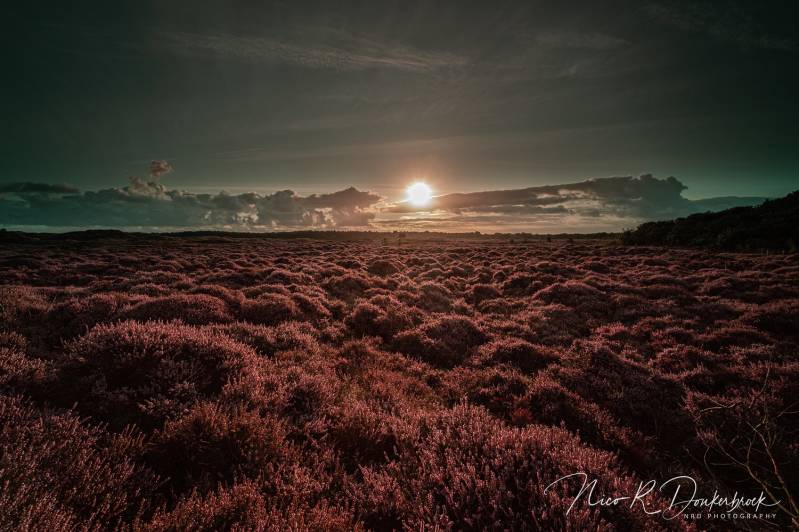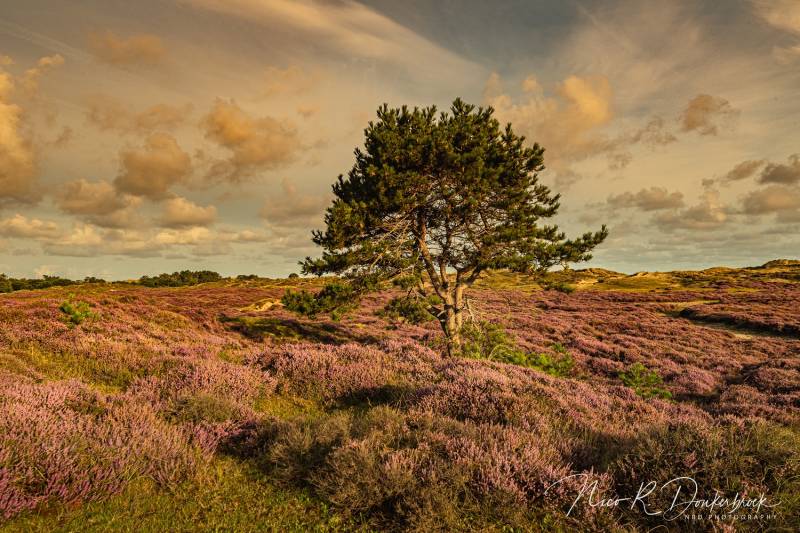New Blog: Excursion "Lauwersmeer complete"

I've driven around the Lauwersmeer before, mainly looking for birds at certain locations. But I didn't know the most beautiful and promising locations. That is why I booked an excursion in 2019 on Ascension Day in 2020. When Covid-19 made its appearance in that year, I moved the excursion a year ahead, which seemed safer to me. And in May 2021 it came about that I roamed around the Lauwersmeer for three days and visited locations where you can spot and photograph most species of birds.
The excursion was admittedly one day, but for me it still connected a day before and a day after. The excursion; "Lauwersmeer Complete", is an annual excursion, always on Ascension Day and is organized by Birdingholland.nl, with the guides Martijn and Lazar. This day was on Thursday, May 13, 2021. It was lovely walking weather, lots of sun and little wind. With twelve people, divided into two groups, we set out and the first location was the Jaap Deensgat. The first special bird species that we heard was a 'hoemping' Bittern, but this one did not show itself. What did show up were three White-tailed Eagles on the ground. However, at a great distance, which did not benefit the quality of the photos. In addition, we saw Reed Singers, Bearded Man and Barnacle Goose.
Sedge Warbler
Reed Bunting
Reed Bunting
Bearded Tit (female)
Bearded Tit (male)
Barnacle Goose
Also a Grasshopper Warbler, Lesser Plover, Ruff, Bluethroat and Gray Plover, But unfortunately I didn't have this one in the picture.
The next location was on the south side of the Lauwersmeer. Again, we were split into two groups. Nice observations were made here, both visible and only audible. The Oriole was clearly audible, but did not show itself. The other group saw a Purple Heron, our group unfortunately no longer. Four migrating Storks, Mockingbird, Mustache and Nightingale. All heard and/or seen but not able to photograph. There was a Penduline Tit, Chaffinch, Fitis, Common Tern and a male Marsh Harrier that glided over the reed beds.
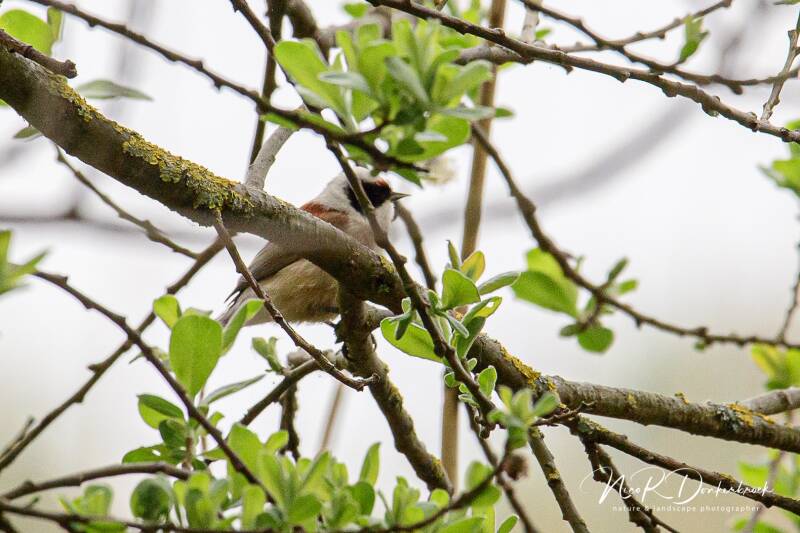
Penduline Tit

Chaffinch
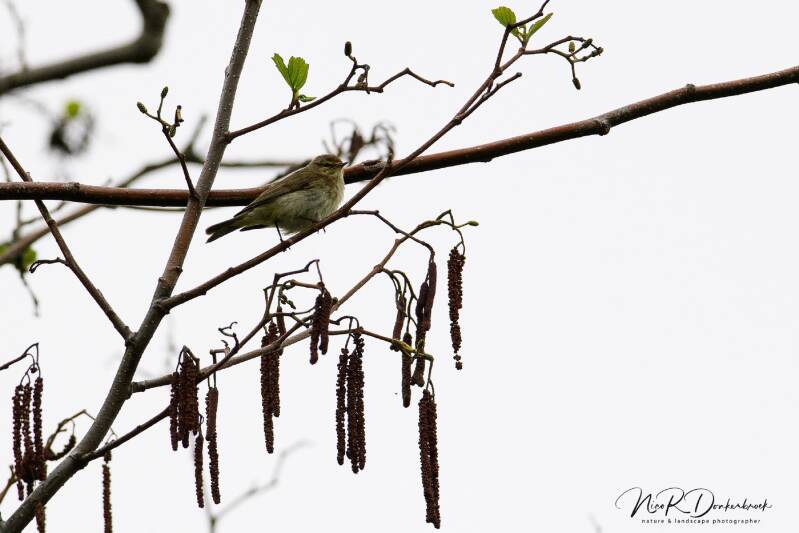
Willow Warbler
Marsh Harrier
Common Tern
From the south to the north of the Lauwersmeer area. Or rather, to the Wadden. It was low tide and that sometimes results in a large number of waders. But before that happened, the Bantpolder was visited. There were large numbers of Barnacle Geese here, but the Dotterel, which had been observed there before, had unfortunately already disappeared. The Red-breasted Geese could also be there. Two were seen. Although this species stands out well among the Barnacle Geese, I have not been able to observe them myself. One of the bird watchers reported that a Flamingo was flying towards us. A joke? No, certainly not, a European Flamingo actually flew by.
The Waddendijk, we are there. Pleasantly busy with day trippers but also with waders. No sooner had I set up my tripod with the camera than one of the guides went crazy. No sooner had he set up his telescope than he spotted a Red Phalarope in summer dress. The bird was resting among a large number of sooty sandpipers, ringed plovers, redshank, some knots, crooked sandpipers and lesser sandpipers. Exceptionally rare to see the Red Phalarope in the spring and in this carpet in the Netherlands. In the autumn you can sometimes see young birds along the coast. The species is a swimming wader that hibernates in the oceans and breeds above the Arctic Circle, the guide told us, but then have a less attractive plumage, white/grey. First time for me to see the species. The photo isn't exactly great, actually bad, but it was quite a distance. Crop had to lose quality, but I'm glad I got the photo.
A less beautiful photo and still glad I have a photo of the species. The red-necked Phalarope sitting between the sooty sandpipers.
Panic! Within seconds, the entire group of waders, including the Red Phalarope, flew up and away. The reason was an approaching Peregrine Falcon. and then you must go!
The group of waders in flight and on the run. Redshank and Ringed Plovers.
After the Waddendijk, only one location and two different hotspots remained. These spots were located on the west side of Ezumakeeg. Ezumakeeg-North, a lookout hill, and Ezumakeeg-South, where there should have been a bird hide but had been set on fire by vandalism. Without a hut it was also a very nice place for bird watching. In the northern part it was the courting Ruffs. Unfortunately further away than was desired and it had also become a bit hazy. Not really ideal for taking pictures but we had to make do with it. I was also able to capture a Grebe in this area.
Balding ruffs. Several males with collars who are fully 'kemping'; Beautiful spectacle!
Male and female Ruff
Grebe with prey.
The final destination was the southern part. There I could enjoy two species that I had never seen on Terschelling, my base. The Stilt. What a beautiful appearance. Hugely long pink legs (almost half the total length), black and white plumage and long straight needle fine bill. Female white head and crown, male gray crown. A Ringed Plover came by for a while. This species was better known to me.
The Temminck's sandpipers showed themselves up close. The species was migrating from Italy/Greece to the Scandinavian countries of Norway, Sweden and Finland. It was fun together with the Stilts, actually, as it had been enjoying all day. I now know the places and will definitely return to the Lauwersmeer area.
Male Stilt.

Mating Stilts
Ringed Plover
Temminck's sandpiper
Next year on Ascension Day the excursion will take place again, it is now online and can be booked. A must for bird watchers and bird photographers. My thanks to Martijn and Lazar.
Along the Waddendijk.
For a beautiful sunset you have to be at the North Sea beach. You don't have that along the Waddendijk on Terschelling, for that you have to be on the Frisian Waddendijk. I often cycle on the maintenance road of the Water Board on the outside of the dike. Observe the places where I see a beautiful photo. Then it becomes planning when. What is the light like and if there is a beautiful cloudy sky on the day you want to go. You use apps to help you plan. I use WeerXL, Rainfall radar, Photopills, TPE, Planit or Tides. So I go prepared on the road and then it is still disappointing with the cloudy sky. You are not just another weatherman.
When I left home it was still clear with beautiful clouds. Once on the spot it was different. An approaching mood. Rainfall radar was just beside it and I got a wet suit (Nikon D5, ISO 100, f8, 1/100 sec., 32mm)
My trips go from West to East.
First West. At the end of the day, an hour before sunset. Nice warm light, unfortunately few clouds but actually came out well again. The sun could not hide. At the 'light' and the granite statues, the golden light fascinated me. You had to be careful because you just had sheep shit under your soles. The sheep were also interested in my bicycle because it was tipped over on one ear a little later. At one point the sun is an extension of the dike. The backlight gives nice contours on the sheep's fur. With an ND16 gray filter and an exposure time of 4 sec with f14 I make a picture of which I can be satisfied with. Still I keep in mind that I can make this subject even better, so I have to do this again.
Grazing light falls over the dam and the statue. (Nikon D610, ISO 100, f8, 1/20 sec, 35 mm)
The setting sun provides a light contour around the sheep's fur. (Nikon D610, ISO 100, f14, 4.0 sec. 35 mm)
At another time I plan to photograph the Wad at low tide south of the Strieperpolder and Strieper Kwelder. The long rows of stumps - remnants of posts - starting at the bottom of the dike and walking eastwards have been planned for some time. At least, the photo I want to take has been in my head for some time.
Once on site it is not easy to make a beautiful composition of the image. The clouds don't cooperate, or I mean to say, the wind. The clouds drifted from right to left in my image. It was a southwest wind. A northern wind would have been better photographically. Then the clouds would float from behind and disappear to the infinity in line with the viewing direction. Looking into the sky, I notice that the desired shapes of the clouds that I had in mind above the posts will not come over the top. All the more reason to return to this place with wind from the north and a cloudy sky where the desired cloud shape will be present.
The stumps of the rows of posts have a pyramid shape. Its reverse form is missing in the cloud formation. If this were the case, the image would have been much more fascinating. (Nikon D610, ISO 100, f8, 1/125 sec, 35mm)
A breakwater on the dike, near the Strieperpolder. (Nikon D610, ISO 100, f8, 1/180. 16 mm)
he Wad near the 'Ans'. I have noticed this little lady so many times. But most of the time it was hightide or there was too much light. Now I came there at sunset. The golden hour had just begun. Now I had the opportunity and I put the camera on a tripod. Climbing over the beams I came to the Wad to choose a low position and took the following photo.
'Dammetje' of poles and stone that border the Ans. (ISO 100, f13, 1/4 sec, 35mm)
Oosterend. The last location in this blog. Between Lies and Oosterend there are also many places under the dike on the mudflats in which I do see a beautiful image. This environment is therefore also in my To-Do-List. The riser (Lies), several breakwaters, the Oeltsjijs (small strip of land outside the dike), sailboats that have fallen dry, many birds and much more. Besides being busy with my passion, I also mainly enjoy nature on the Wad, the landscapes, the feeling of freedom, the serene tranquility with the sounds of the water, the wind, the sounds of the birds. In addition to taking photos, these are elements that make photography so enjoyable. Below you can see some images of a few trips to the eastern part of the Waddendijk.
A dryed sailingship on the Wad near the Dwarsdijk. (ISO 100, f5.6, 1 / 200sec, 800mm)
Oosterender Waddendijk. (ISO 100, f8, 1/30 sec, 70 mm)
Dryed clipper (ISO 100, f8, 1/60 sec, 200 mm)
The Wierschuur. (ISO 100, f8, 1/60 sec, 35 mm
Thank you for reading and watching this blog. Until the next.
The heather blooms.
'The Greenfield' with the flowering heather. (Nikon D5 with Nikon 16-35 f4.0, gray gradient filter GND 8 and polarizing filter. ISO 200, f11, 1/25 sec, 16mm)
The purple gold
Fascinated by nature and landscape photography? If you are on Terschelling, then a visit to the Landerummerheide' and the 'Groenplak' cannot be missed. The flowering heather is overwhelming and I am happy to record that. Of course, it comes back every year. But every year you want to surpass that of the previous year.
The photo above is of the 'Groenplak', made in the late afternoon. A large field located between the 'Longway' and the 'Helmedunetrail'. It would not be superfluous to apply grazing at this location, as was applied to the 'Landerummerheide'. Many Bird Cherry Trees and young oak spoils the sight of the heathland of the 'Groenplak'.
Lots of unwanted vegetation in the heathland of American Bird Cherry (Prunus serotina) and seedlings of the pedunculate oak (Quercus robur) and grasses in the Groenplak. (Nikon D5 with Nikon 16-35 f4.0, grayscale filter GND 8 and polarization filter. ISO 200, f11, 1/5 sec, 16 mm)
Beautiful skies in August and floodlight. (Nikon D5 with Nikon 16-35 f4.0, gray gradient filter GND 8. ISO 200, f11, 1/ 25 sec, 16mm)
Wake up early the next day with the aim of photographing the heath at sunrise. At six o'clock on the spot at the Landerummerheide. Looking around me, I look for a suitable place to get as much of the heath as possible in the picture. First between the heath on a flat ground. A little later I searched for a dune to get out of the heath. Tripod set out with Sunwayfoto GH-PRO Geared head and camera D5 with the filter holder (Benro FH100M2 MKII) with a GND 8 hard transition on the lens (Nikon 16-35mm f4.0). I can get started.
The sun has risen for twenty minutes but still has to climb above a band of clouds. (Nikon D5 with Nikon 16-35 f4.0, gray gradient filter GND 8. ISO 400, f 8, 1/13sec, 25 mm)
The sun is not yet in the picture but the colors are getting warmer, the heath is getting color. (Nikon D5 with Nikon 16-35 f4.0, gray gradient filter GND 8. ISO 400, f8, 1/13 sec, 25mm)
The sun slowly climbs but is not yet visible. She is still behind the clouds. The color changes slowly. A golden glow falls over the heath. The purple becomes brighter. It is 6:35 am. The light is constantly changing. It becomes lighter and still gives a glow over the heath. Too bad that the nights are not colder yet because I still miss some ground fog. That had made this photo session even better. Keeping an eye on the weather in the coming days, maybe I will have another opportunity to get started with it.
It's getting lighter. However, the sun is not breaking through the clouds yet. (Nikon D5 with Nikon 16-35 f4.0, gray gradient filter GND 8. ISO 400, f11, 1/15 sec, 16mm)
(Nikon D5 with Nikon 16-35 f4.0, gray gradient filter GND 8. ISO 400, f11, 1/15 sec, 35mm)
(Nikon D5 with Nikon 16-35 f4.0, gray gradient filter GND 8. ISO 100, f16, 0.8 sec, 16 mm)
The camera here faces north. Grazing light falls over the heath which gives a nice effect. (Nikon D5 with Nikon 16-35 f4.0, gray gradient filter GND 8. ISO 100, f18, 2.0 sec, 35 mm)
It is 7:17 am, the golden hour has just passed. The sun now rises above the clouds. The ND 16 filter has been added to break the bright sunlight. The purple color has become somewhat whiter due to the backlight. (Nikon D5 with Nikon 16-35 f4.0, ND 16 filter, gray gradient filter GND 8. ISO 100, f13, 1.o sec, 16mm)
At 7:17 am, the golden hour is already over. The sun now rises above the clouds. The ND 16 filter has been added to break the bright sunlight. Another shot and then it's time to move me to the other side of the heath. I want the sun behind me now and see a lone pine tree standing there. I want to take a picture of it. For a while I am looking for what I think is the best angle to make a recording of it. That was difficult for a while. Every time I think I have found it my shadow and that of the tripod with the camera fall into the frame. Find another place. That became left from my first points of view and then so that I could turn the camera away from my shadow. This was better, but the disadvantage of this was that less of the heathland was in the photo. Oh well, you can't get everything the way you want. It still gives a nice picture of what I had in mind.
At ten past eight I am back on my means of transport - the bicycle - and load the bag and the tripod onto the luggage rack. With a good feeling that there are beautiful photos, I go home again. Later it appears that I can be satisfied despite the lack of present ground fog. All the more reason to return to the Landerummerheide when the chance of ground fog is present. In addition to being a landscape photographer, you also have to be a little weatherman. Time will tell.
The lonely Pine in the Landerummerheide. (Nikon D5 with Nikon 16-35 f4.0, gray gradient filter GND 8. ISO 100, f11, 1/60 sec, 28 mm)
On top of the Halfwegdune where the view of the heathland - which has a considerable surface area - is very much hampered by the large number of seedlings of the Pinetree
The view of the heath could have been so much better without the seedlings of Pine trees.
Visit to HJ Birdwatching Cabin in Emmen, the Netherlands
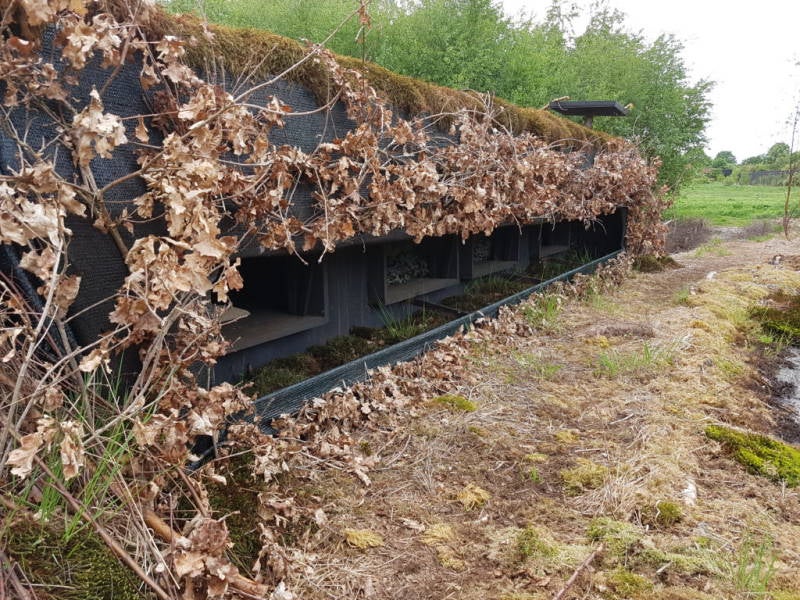
For a long time I played with the idea of visiting a birdwatching cabin. Not only to look at birds but to photograph them. Birdwatching cabins are therefore always found in places where many birds can be expected. The spot at a birdwatching cabin is also created in such a way that it also attracts birds. You will find a water feature for a birdwatching cabin; a pond, a lake or sea. The hut where I want to wait two days for my chances to get a lot of birds in front of the lens has a pond for the peepholes. These peepholes are just above the ground or water surface. Ideal for visualizing birds that are between 2.5 to 30 meters away from the lens. April 3, already on the way to be in the cabin the next morning on April 4 in time.

April 4, 2018
Preparation
For this purpose I rented a house for a midweek at the LandalPark in Ees. Not too far from Emmen, only a half hour drive. The bags are filled and ready on the cart, an Eckla Multi-Rolly with tripod holder, together with the tripods. The alarm goes off at 6 am. First a few cups of coffee to wake up, provisions and a thermos made coffee, followed by the personal care and I'm ready for departure. The cart with the equipment slid into the van and head for Emmen. I do not take the provincial road but go through it via Exloo, Valthe and Weerdinge. At Emmerschans I drive into Emmen. Cross the ring road and drive into the right street where I have to be. At the destination I have to walk another 200 meters and then the trolley comes in handy.


The Birdwatching cabin
The birdwatching cabin is made from a sea container and converted as a viewing shelter. Equipped with peepholes, a raised floor and buried for two thirds. By means of the received code I can open the key box next to the door. And with the key remove the padlock and the chain. On the site of the landlord I already knew what the interior of the birdwatching cabin would look like and I had been looking forward to being part of that interior for so long. Well, I am inside and start to install myself.
The preparations in the shelter
The birdwatching cabin is suitable for four people, so on my own I have a lot of space. The two central peepholes have already been opened and camouflaged frames have been placed in front of them and I can start putting the cameras in position. There is a wide 'windowsill' for the peepholes to place the granulate bags on which the cameras can rest. Using a tripod is not possible with the 70-200 mm lens. The tripod does not seem to be placed close enough to the peephole. For the right peephole I put the Nikon D600 with a Nikon 70-200 mm f / 2.8 with converter x2. Using a granulate bag and also with the small bags present, I place the camera in such a position that it is aimed at the top of a trunk of about three meter, which I hope a bird of prey will land on. This way I do not have to move my camera if a bird of prey would use the trunk as landing spot. It is my silent hope that this will happen. For the other, the left peephole I place the Nikon D610 with a Tamron 150-600 mm f / 5-6,3 Di VC USD A011N with converter x1,4 on a granulate bag.

Lure birds
The owner is careful to attract many birds. A tray with mealworms has been set up to scatter at the central location of this bird-photo shoot scene. Only there it may be scattered. There is also a bird guide ready for use. Of course I also have my own bird guide. After scattering the mealworms, the party can begin. Really, you do not know where to look. From all sides birds come to visit the spot around the pond and I am busy with just pressing the release button.
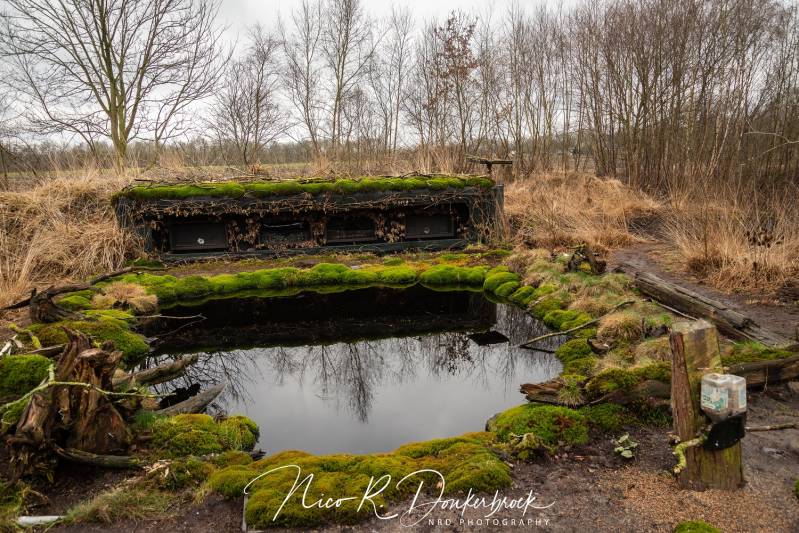
It is the very first time for me in a birdwatching cabin. So have no idea how many birds come to visit such a place. It's all day long, it's a coming and going. The great spotted woodpecker, man and woman, regularly sit on the three-meter high tree trunk. It becomes clear to me what they always do there. Holes have been drilled in the trunk - left and right of the tribe's face and stuffed with food. A real 'trunk to lure'. Not only the Woodpecker knows how to find those holes. The Great Tit, Blue Tit and the Black-capped Chickadee also know those food spots very well.


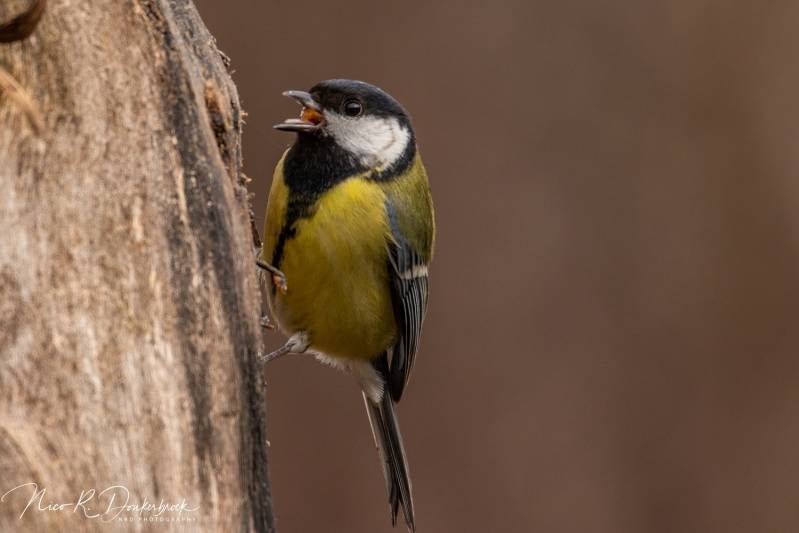
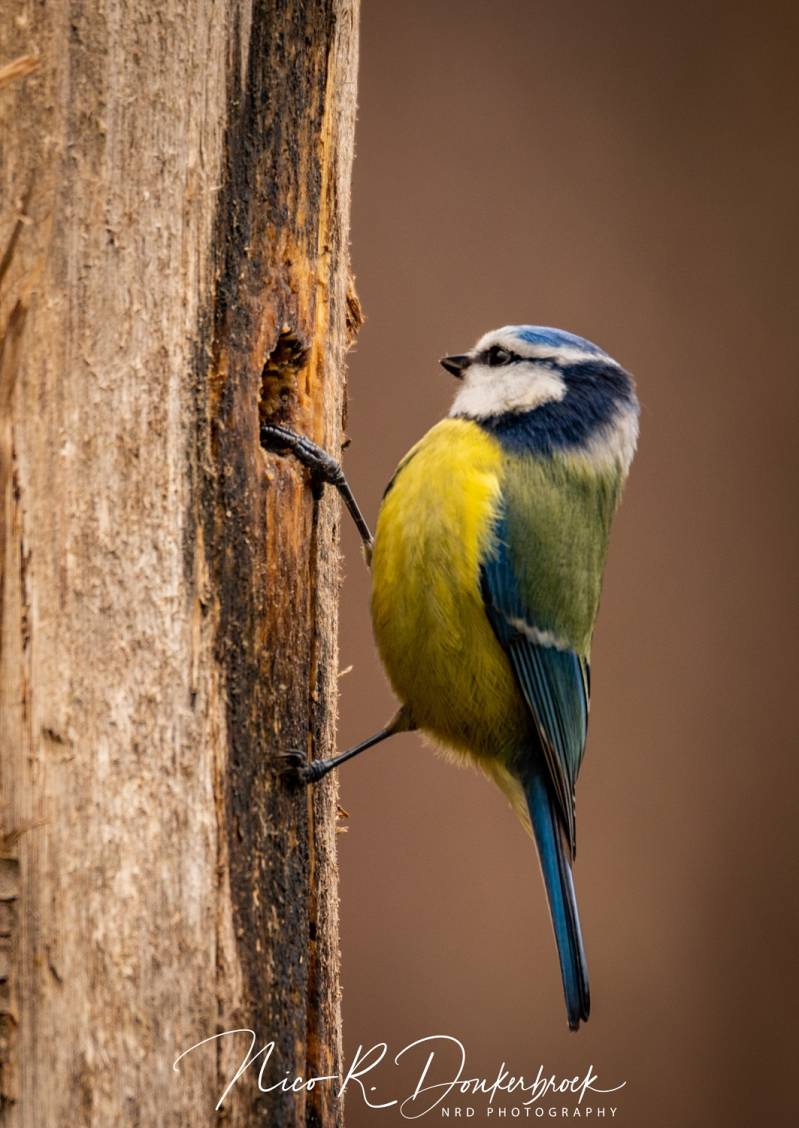
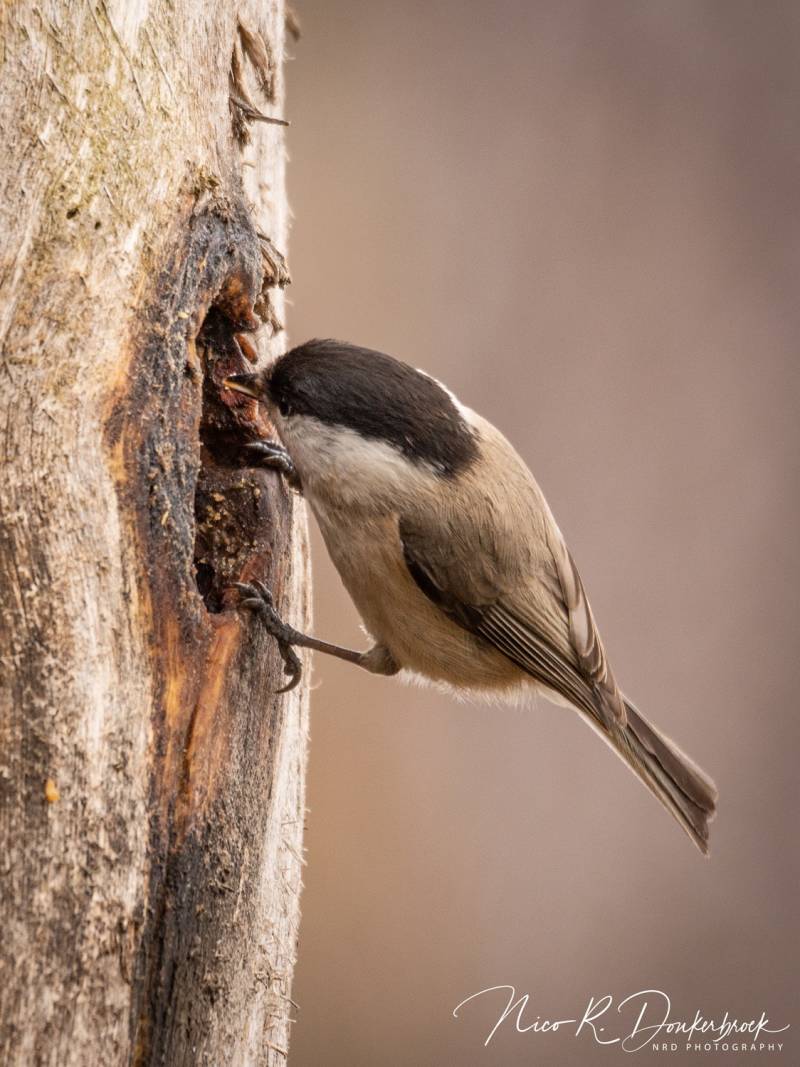


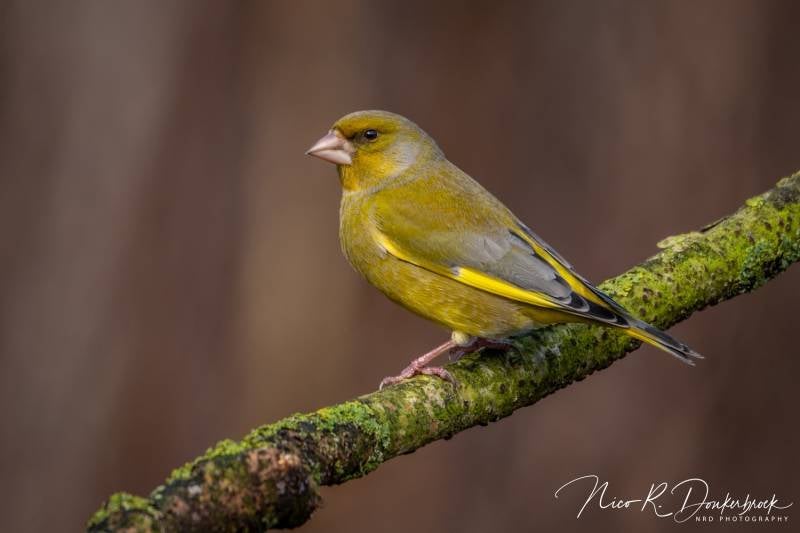

This also applies to the trunk right in front of me on the other side of the pond. On the rear of the trunk - from the watching cabin not to be seen - two feeding devices are attached, making it a busy place of interest. Besides Great tit also Bullfinch, Brambling and Greenfinch come to this place constantly, arguing among themselves who is next. This alone is a nice thing to look at.
Different setup
After a few hours I still find it pretty difficult to work with the camouflage screen, which was already placed on my arrival. It is a framework with a kind of mica glass or something. From the inside you can look outside without being seen by the birds. The birds only see a black window which does not suggest anything behind it. In the middle a square is saved through which the lens can be inserted. But if you want to take a little too far to the left or right to photograph the birds present there or down to photograph birds on the waterfront, the lens distorts the mica and then makes a crackling sound. In other words, you are somewhat hindered in positioning the lens. In addition, I would much rather use the tripod with the Benro Gimbal Head GH3, which allows me to move much more flexibly with the lens. I decide to remove the camouflage frame and with the existing strips of camouflage cloth I make it so that the lens can move freely. This is a wise decision. Due to the length of the lens, it comes out of the camouflage cloth, making it easier and smoother to move the lens without making a sound. I like it a lot better, also on the next day I make this setup. The other camera stays on the tree trunk, in case ........... that one bird of prey comes to take a look.

The weather
The weather forecast for the country was not too good. It would be overcast with a rain front that would spread over the country in the cold weather. It is cloudy but it has hardly rained. The only thing I noticed in rain lasted only three minutes. The cloudy weather means that the ISO value has to be increased considerably. The Tamron 150-600 mm lens can not have a larger aperture due to the limited light than f/9 with a shutter speed of mainly 1/250. The high ISO value does cause some noise in the background. Not very disturbing but still ... you can see it.
Mealworms
Around 13.00 hours I sprinkle some mealworms in the central spot. Mealworm eaters come straight away. The Blackbirds, and the Finches, the Dunnock, the European Robin and the Yellowhammers are doing well at this feast. Even the Great- and the Blue tits pick up the worms. The different ways in which the mealworm is worked in was interesting to look at. The Great- and the Blue tits take their worm along to a branch, put one leg on the worm and with the beak they pull the mealworm empty so that an empty casing remains. The Bullfinches and the Finches do something else. With their wide beak they push the contents of the mealworm out to eventually leave the empty casing. The European Robin, Brambling and Eurasian Tree Sparrow are less picky and work the mealworm in its entirety. Funny, that different birds have their own table manners.
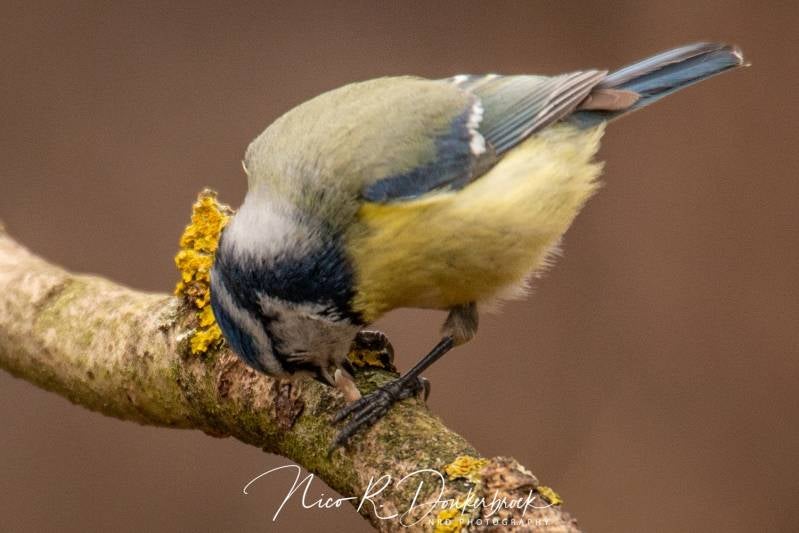




At 16.05 hours I see circles on the water. It starts to rain very lightly, only for three minutes and that's it. I just keep going. Watch, focus and press the release button. There are already a lot of all kinds of that day photographed but there will only just that one, that one pose, that one situation still occur so you have a picture that stands out. And that's why you stay. Yes, and of course at that moment that a bird of prey, a Hawk for example, lands on this spot. It would not be the first time so .........

The last mealworms are scattered at 5.00 pm. I decide to continue. A Black Crow lands and finds it an unwelcome visit. All birds like that too, because they are gone. I think, just make a noise, maybe he'll fly away and call "Hey," and the crow will fly away. With fifteen seconds the first Great tits come again, quickly followed by other species. It starts raining very briefly at 5.13 pm, but it does not bother. My first day in this bird watching cabin is almost over. The hope to capture a bird of prey is resistance to tomorrow. I write my experience of staying in the bird watching cabin in the guestbook. All tenants do this and can be useful for following tenants. You also note which birds have presented themselves that day. Nice such a script. I had already browsed in the morning to see what I can expect. After recording a story and the enumeration of the observed and photographed birds, I decide to end this day in the birdwatching cabin. At 6.30 pm I close the door of the cabin and walk towards the car. The father of the owner comes to me and asks how interested my day has been and what kind of birds have been today. It is early April and more and more species are returning from the winter. He also expects the Green Sandpiper to return to this spot one day, but no, no Green Sandpiper today. "Tomorrow I'll be back", I tell him, so who knows, I'm lucky.
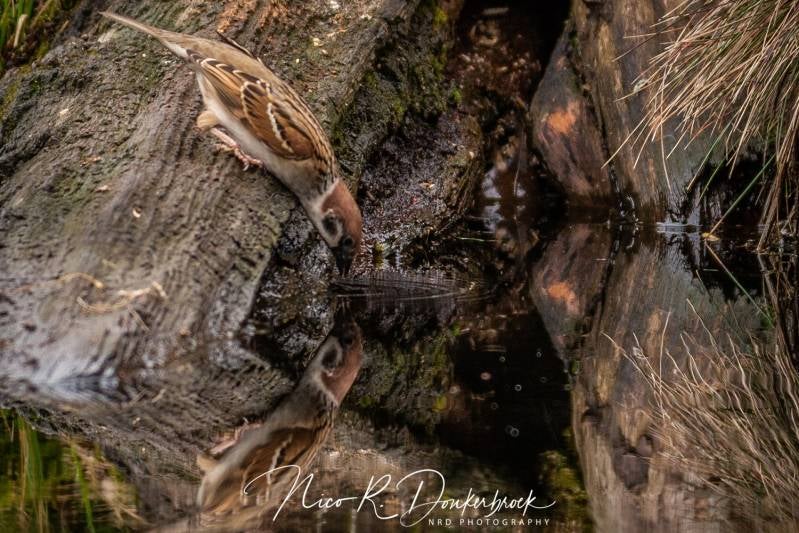
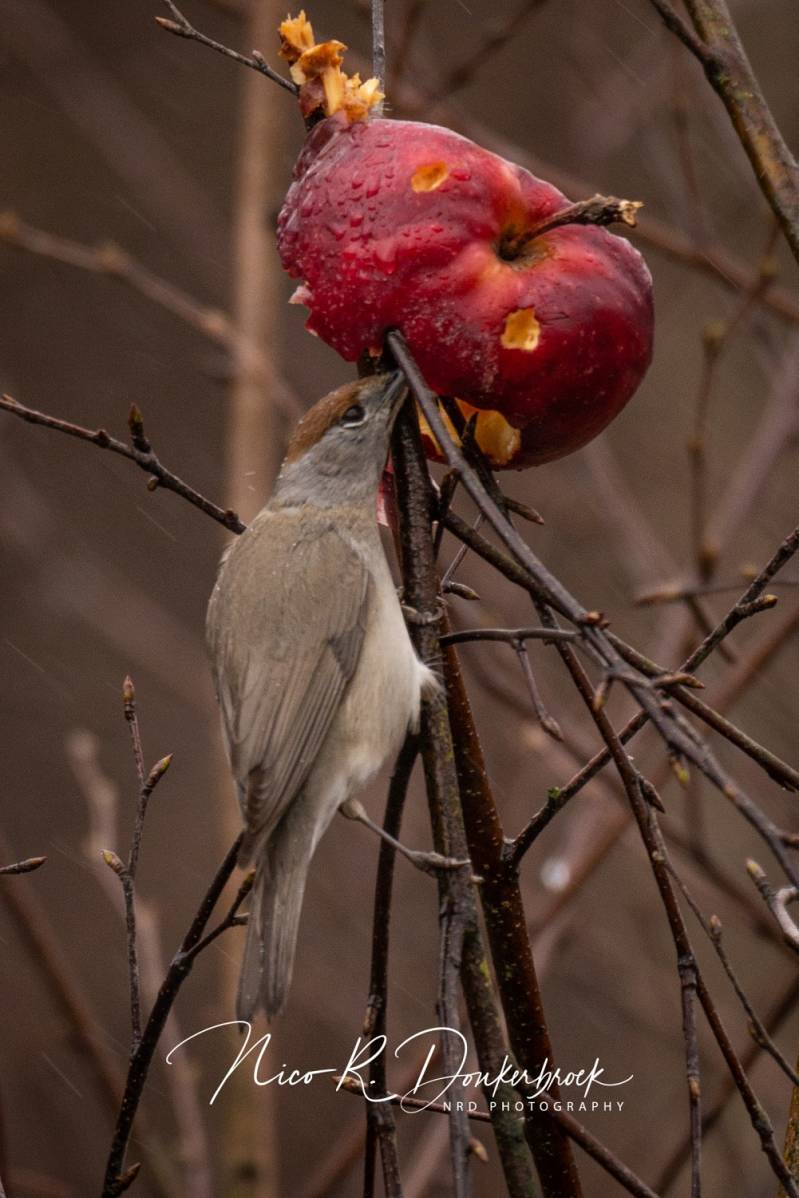


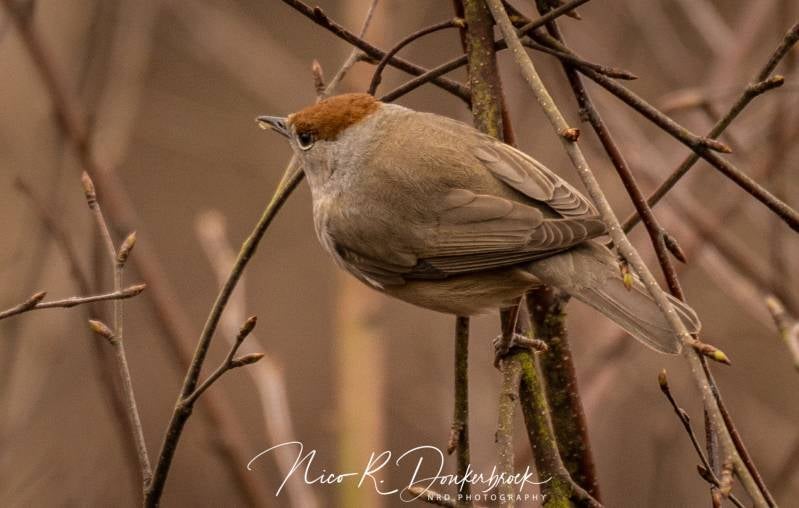
April 5, 2018
Day two in the Bird watching cabin
The day starts as the day before. Get up early, prepare provisions, take care of yourself and on your way to the bird watching cabin. I knew the procedure of key, padlock and installation now so it went a little easier today. The weather was like the day of yesterday. Cloudy, so gray and a light moth was falling over a long period of time. I saw it from the birds. Very small raindrops on their plumage and drops on the branches of the bushes. Frankly, I only saw that when I looked at the photos on the laptop screen. The drizzle you see in some photos also fall in the form of short thin lines in the background. At the first photos I removed that. A moment later I thought: "Let those lines sit well, they belong in the photo". I walk a little forward, now back to the watching cabin!
The ISO is therefore on the high side and that goes fine. At one point I see a bird sitting in a bush where an apple was put on a branch. I did not know which one it was. It looked like a Blackcap but the color of the top of the head like a toupee is not correct. First just capture and then look up in the guide. It kept eating the apple so it is a fruit eater. I wish that this bird would sit somewhere else because that apple also came on all the photos and now wanted a picture without the apple. But it was obviously hungry. Now first look up. Directly to the page where the Blackcap can be found. And indeed, the male has a black toupee, but the female has a brown one. That's what she was, a Blackcap woman. Just arrived again from her winter home. Nice, I have a subject to keep an eye on.
Yesterday I was randomly printing to not miss one bird, today I want to be more selective and patient. I do not have to be fast. After all, it is a coming and going of birds and stay there for a long time and you have all the time .....
As a result, I made better pictures with more beautiful poses of the birds. I also shot half the images less than yesterday. It remains cloudy and drizzling. At half past two I see some circles in the water, it rains light and was also short-lived. Suddenly there is a strong wind that lasts for two hours. The heavy door of the hut blows a few times and the curtain that hangs in front of the door to stop light blows a few times through the draft. I fix it with pegs.
At a quarter past three all birds suddenly fly away. A bird of prey in the neighborhood? Probably, but no one lands on this beautiful spot. Unfortunately! Five minutes later all the birds returned again. The great tits first, the Bullfinch and the Greenfinch follow and a minute later the weather is buzzing with birds. What can I enjoy here. To see, observe and photograph all those different birds. Actually, you are very busy with that. There is really no hanging back. You remain alert and that keeps you focused on that one moment, whether it comes or not.
I would still like to see a Wren and a Green Woodpecker. A Linnet, a Kingfisher or a Goldfinch and of course a Goshawk or a Buzzard. I would have liked to have them in front of the lens. It starts to get lighter and the sun shines at four o'clock. The surroundings immediately look friendlier and the birds look more radiant. I put them down once again for as long as the sun shines. The ISO can be set significantly lower and set it to ISO 160. It looks good. I get cold and start shivering. That is pretty strange. The whole day till 16.00 hours cloudy and drizzle and do not get cold, but now the sun is shining I get cold. I decide to stop. Bring the equipment down and store it in the bags and load the cart. It has been nice for today.
The bird species from day 1 and 2




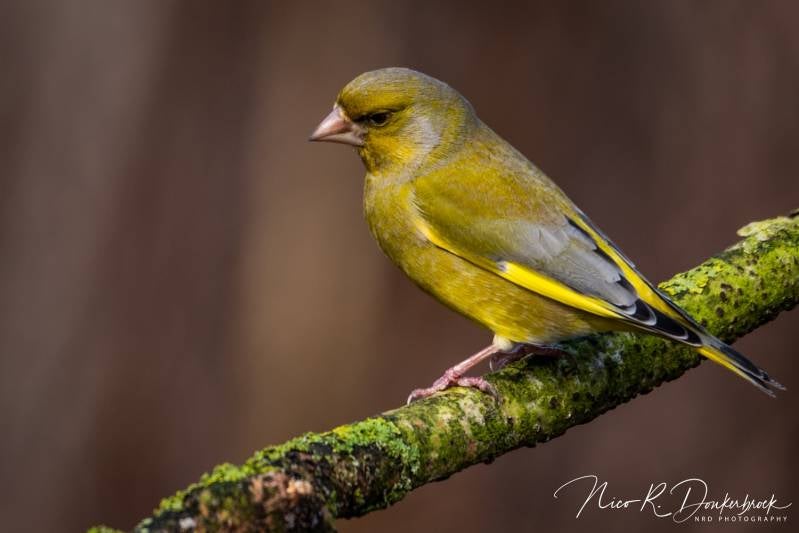
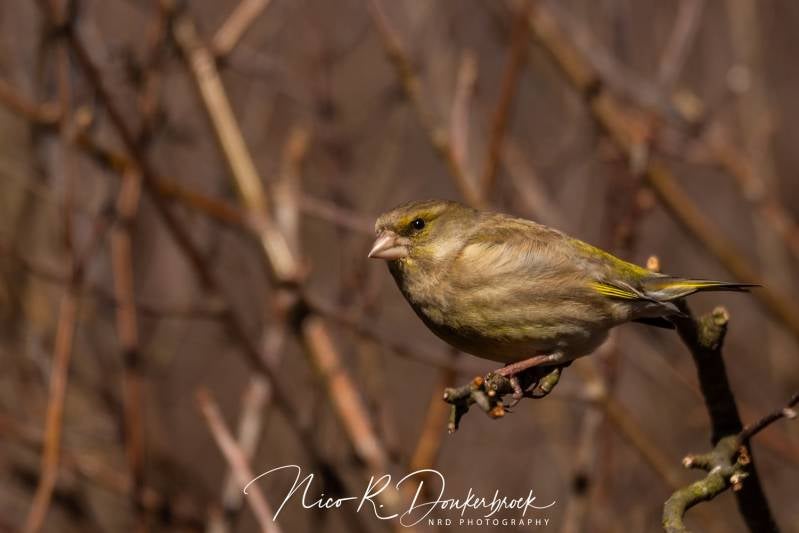


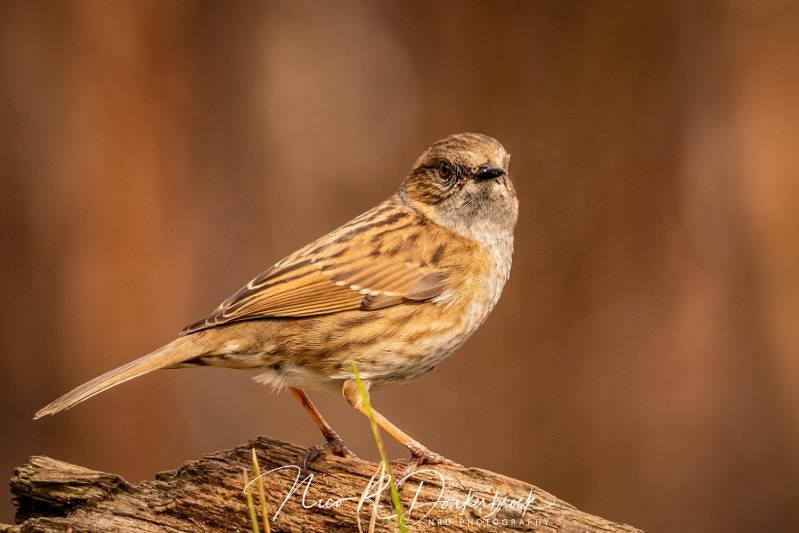
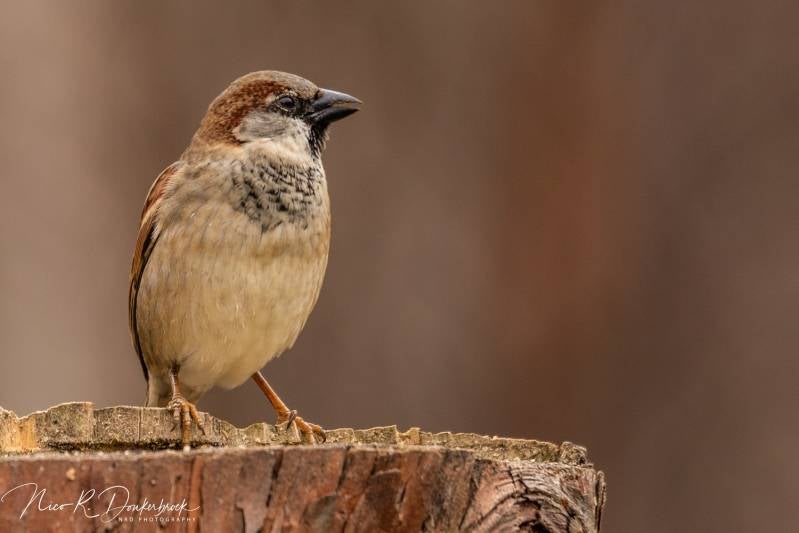


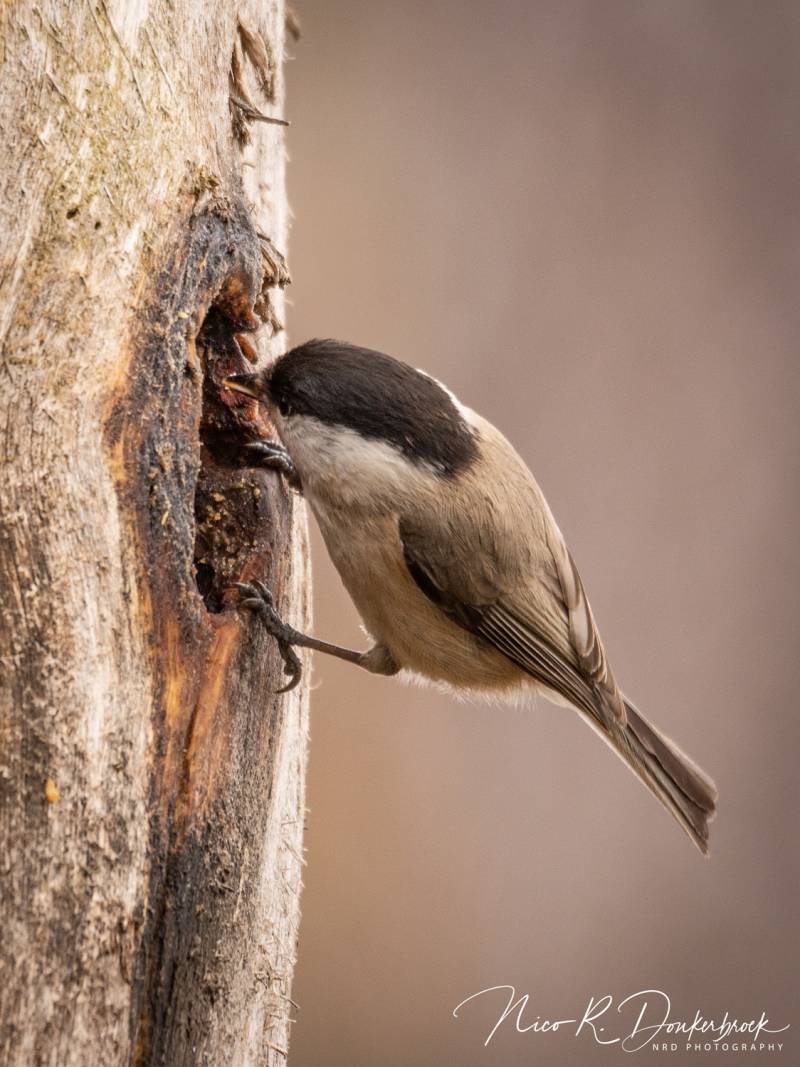
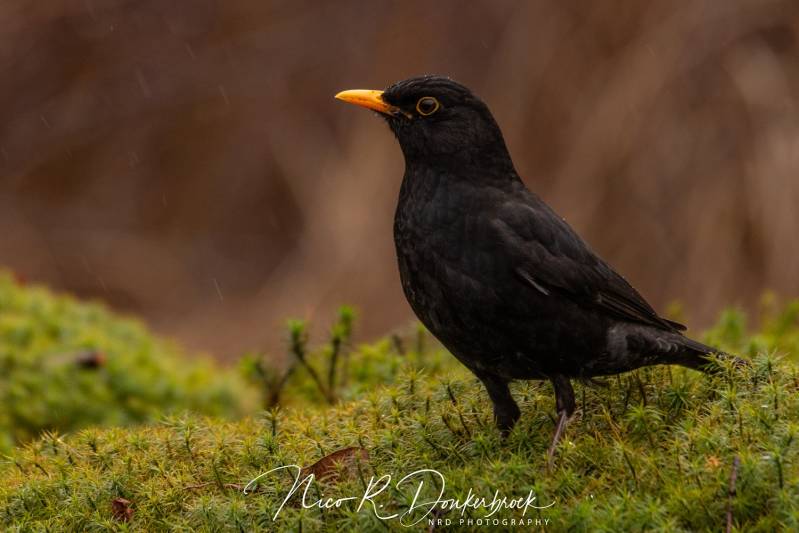


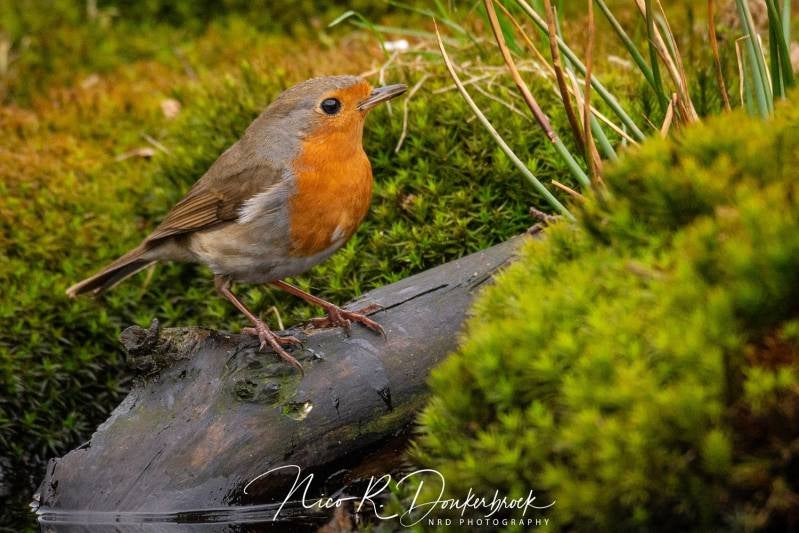




During the two fantastic days that I experienced in the birdwatching hut, the following species appeared in front of the lens:
Great Tit
Bleu Tit
Bullfinch-man
Bullfinch-woman
Greenfinch-man
Greenfinch-woman
Great Spotted Woodpecker-man
Great Spotted Woodpecker-woman
Dunnock
House Sparrow
Brambling-man
Brambling-woman
Willow Tit
Blackbird-man
Blackbird-woman
Tree Sparrow
Robin
Finch-man
Finch-woman
Blackcap-woman
Yellowhammer
Closing
Before I finish writing a story with my findings of the day in the guestbook. I think everyone is looking into it. Always nice for the next visitor who will live in the birdwatching cabin tomorrow.
After clearing everything up and wiping the floor for a while, I close the door again and put the key in the safety cupboard and twist the combination lock. All digits at zero. On the way to the car I had a chat with the father of the young owner. I tell him that I will definitely be back in this cabin. I really liked it and I enjoyed these two days in the bird watching cabin of Henk Jan Klein Tiessink
Also interested? Go to www.vogelkijkhut.com for information and reservations Bird viewing hut


